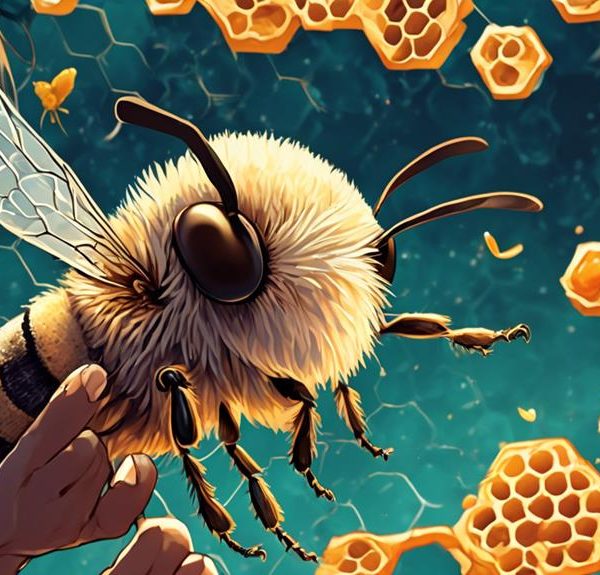Keeping mason bees thriving: explore their challenges, potential extinction, and adaptations in a rapidly changing environment.

Are Mason Bees Endangered
Navigating the world of bees is akin to exploring a complex, buzzing labyrinth. You might be familiar with honey bees, but have you ever heard about mason bees?
Unlike their hive-dwelling counterparts, these solitary artisans are facing a unique set of challenges. Are they on the brink of extinction or simply adapting to a changing environment?
We'll uncover these questions and more, as we delve deeper into the fascinating world of these miniature masons.
Key Takeaways
- Mason bees face threats such as habitat loss, pesticide exposure, and climate change, leading to a decline in their populations.
- While mason bee populations are stable in some areas, they are declining in others, both in North America and Europe.
- Mason bees are more efficient pollinators than honey bees and play a crucial role in maintaining biodiversity and ensuring food supplies.
- Conservation efforts, including habitat restoration, planting native flowers, public education, and promoting responsible farming practices, are essential for the protection and survival of mason bees.
Understanding Mason Bees
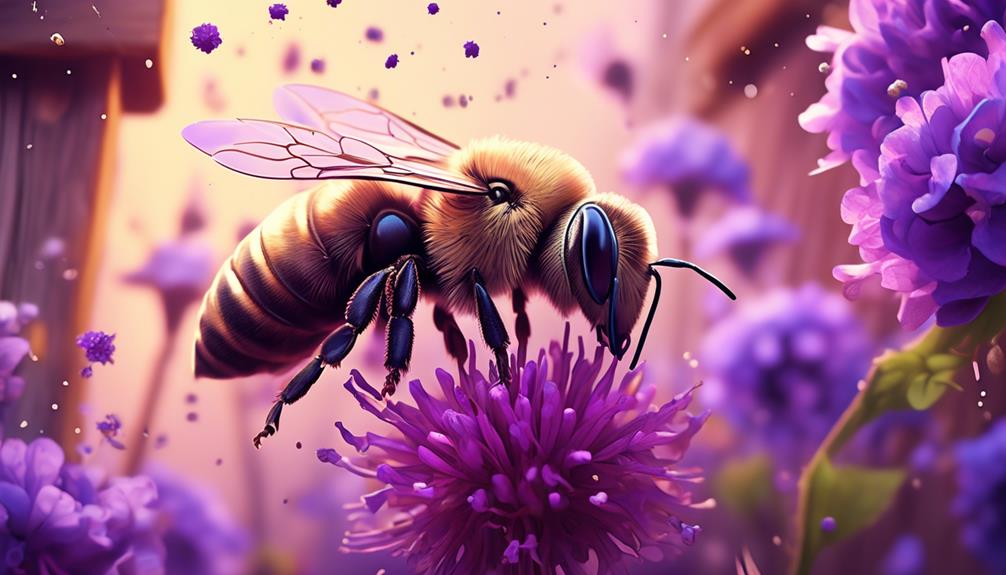
To fully appreciate the plight of the endangered mason bees, you need to delve into their fascinating biology, life cycle, and ecological roles.
Unlike honey bees, mason bees are solitary creatures. Each female is fertile, and after mating, the female starts constructing nests, often in hollow reeds or twigs, and occasionally in the cracks of buildings, hence their name.
You'd be intrigued to know that mason bees undergo complete metamorphosis, passing through four main stages: egg, larva, pupa, and adult. The female bee lays an egg on a provision of pollen and nectar, then seals the chamber with mud. This cycle repeats until the nest is full. When the larvae hatch, they feed on the provision until they're ready to pupate.
Ecologically, mason bees play a crucial role in the pollination of plants, and their decline could disrupt ecosystems and impact food production. They're known for their efficiency, a single mason bee can do the work of 100 honey bees. Therefore, understanding and protecting these industrious pollinators is of utmost importance.
Current Status of Mason Bees

So, what's the current status of mason bees in our ecosystems? Well, you should know that the situation is a bit of a mixed bag. In some areas, mason bee populations appear stable, but in others, they're declining. This is largely due to habitat loss, pesticide exposure, and climate change.
Region | Status of Mason Bees |
|---|---|
North America | Stable but declining in some areas due to habitat loss and pesticide exposure |
Europe | Declining due to intensive agriculture and habitat loss |
Asia | Stable but under threat from habitat loss and climate change |
Australia | Not native; introduced populations are stable |
It's important to note that these are general trends and the status of mason bees can vary greatly within these regions. For instance, in North America, mason bees are thriving in some urban areas due to the availability of nesting sites and diverse food sources. On the other hand, in rural areas where agriculture is intense and pesticide use is high, populations are often dwindling.
You can see that while mason bees aren't globally endangered, they're under threat and their status can change quickly if we don't take action to protect them.
Threats Facing Mason Bees
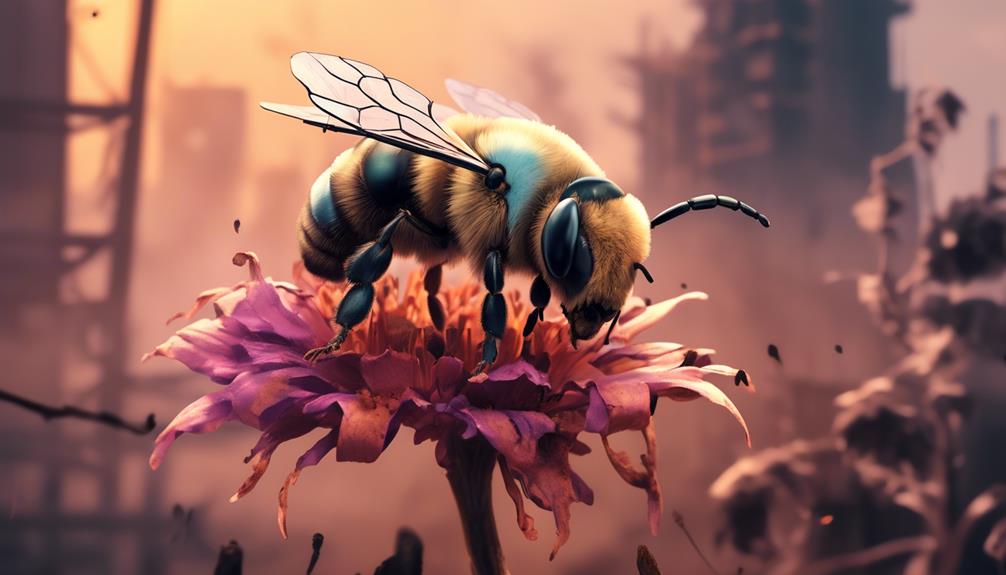
Having examined the current status of mason bees, it's crucial we now turn our attention towards the threats they face. Pesticides, habitat loss, and climate change are the primary threats they currently grapple with.
You might wonder how pesticides, designed to protect crops, harm these bees. Research shows that neonicotinoids, a common type of pesticide, are highly toxic to mason bees. They can impair their foraging ability and reproductive success, leading to a decline in their population.
Habitat loss is another significant threat. Mason bees require specific nesting sites, usually in hollow stems or holes in wood. With the rapid urbanization and industrialization of natural landscapes, these habitats become scarce, thus limiting their survival.
Lastly, climate change is a formidable threat. Warming temperatures can disrupt the bees' hibernation patterns and food availability, leading to an imbalance in their life cycle.
Importance of Mason Bees
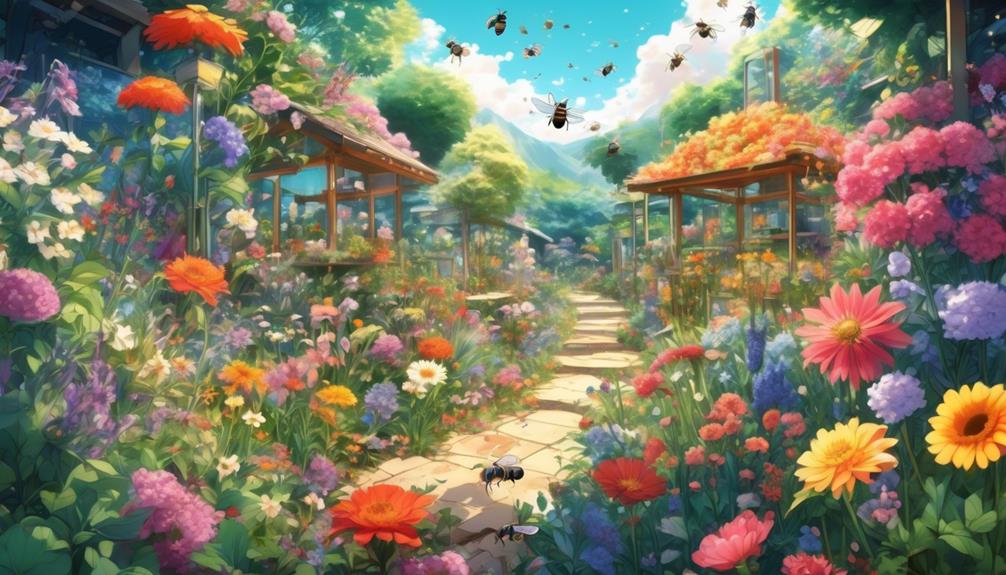
Despite their small size, mason bees play a vital role in our ecosystems, particularly due to their exceptional ability for pollination. You might've heard about the honey bee's impressive pollination abilities, but mason bees are actually more efficient. A single mason bee can pollinate as many flowers in a day as 100 honey bees.
They're solitary bees, meaning they don't live in hives. Instead, they nest in small holes and crevices, often in wood or masonry, hence their name.
Their solitary nature makes them less likely to sting, as they don't have a hive to protect. This makes them ideal for urban and suburban areas, where they can pollinate local plants without bothering people.
Their ability to thrive in various environments also means they're vital for pollinating a wide variety of plants, from fruit trees to wildflowers. This pollination is crucial for maintaining biodiversity and ensuring food supplies. It's not an exaggeration to say that without mason bees, our ecosystems and food chains would be significantly impacted.
Conservation Efforts for Mason Bees
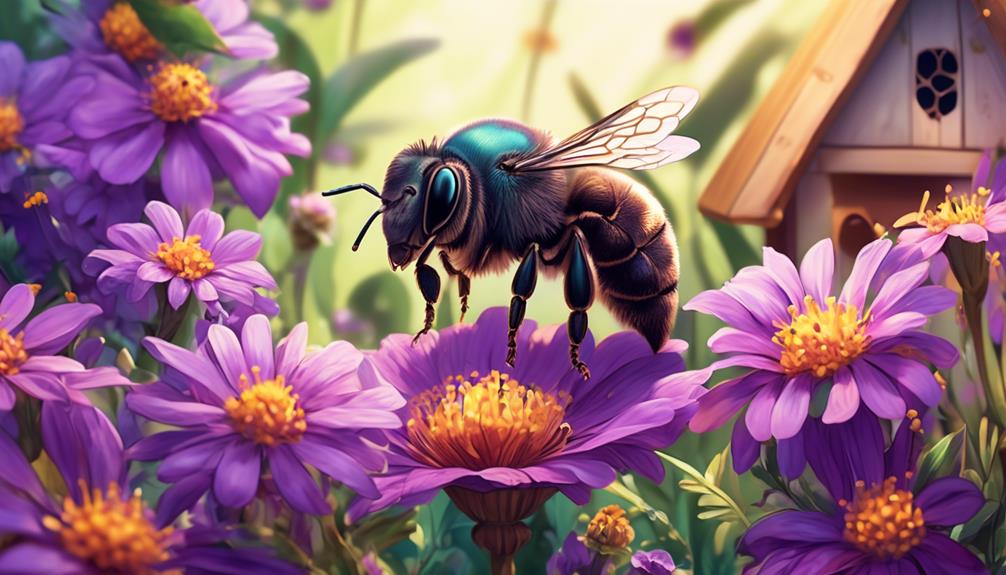
Given the pivotal role mason bees play in our ecosystems, numerous conservation efforts are underway to protect and sustain their population. You'll find that these initiatives often focus on habitat restoration, public education, and responsible farming practices.
Habitat restoration is integral to these efforts. You may not realize it, but urban development and deforestation have rapidly reduced the natural habitats of mason bees. Conservationists are working to reverse this by creating safe, suitable environments for these pollinators. They're planting native flowers, ensuring a steady food supply, and setting up nesting sites to encourage population growth.
Public education is another crucial component. Conservation organizations are crafting campaigns to raise awareness about the importance of mason bees and the threats they face. They're teaching you and your community how to create bee-friendly gardens and avoid harmful pesticides.
Lastly, they're promoting responsible farming practices. By advocating for organic farming and reduced pesticide use, these groups hope to create a safer environment for mason bees. They're showing farmers that these bees are beneficial partners in crop production, not pests.
In short, conservation efforts for mason bees are multifaceted, involving a mix of science, education, and community action. These initiatives are vital to ensuring the survival of these essential pollinators.
Frequently Asked Questions
What Is the Lifespan of a Mason Bee?
You're curious about the lifespan of a mason bee. It's a fascinating creature, isn't it?
Well, a mason bee's lifespan isn't very long. They typically live for about 6 weeks.
The females emerge in the spring, mate, and then spend the rest of their lives laying eggs.
The males, on the other hand, only live long enough to mate. They die shortly after.
It's a brief life, but a vital one for our ecosystem.
Can Mason Bees Sting?
Yes, mason bees can sting, but they're far less likely to than other bees. Unlike honeybees, they're solitary creatures and don't have a hive to defend.
Mason bees are also non-aggressive. They'll only sting if they feel extremely threatened or trapped. Plus, their stingers aren't barbed, so they can sting multiple times. However, their sting is much less painful than a honeybee's.
How Can We Differentiate a Mason Bee From Other Bee Species?
You can differentiate a mason bee from other species by its appearance and behavior.
Mason bees are small, metallic blue or green, and lack the yellow markings of a honeybee.
They're solitary creatures, not living in hives like honeybees or bumblebees.
Also, they nest in pre-existing holes rather than building wax combs.
Noticing these unique traits will help you identify a mason bee.
What Is the Mating Process of Mason Bees?
You're curious about the mating process of Mason bees, aren't you?
Well, once the female Mason bee emerges from her cocoon, she'll mate with several males who've been waiting for her.
After mating, she starts her search for a perfect nesting site.
She'll lay her fertilized eggs, one per cell, in a hollow tube, each egg sealed off with mud.
It's a fascinating process, isn't it?
What Regions Are Mason Bees Native To?
You're curious about where Mason bees are native to. These hardworking pollinators hail from North America, primarily. However, they're not just confined there.
You'd find them in various regions across the globe, from the wilds of Asia to the diverse environments of Europe. They're adaptable and thrive in a range of climates and habitats, making them a common sight in many gardens, fields, and orchards.
Conclusion
You've learned about mason bees and their current situation. They are not officially endangered, but they are certainly under threat. It's important for us to support conservation efforts to protect these productive pollinators.
Remember, every small effort counts. Let's do our part to ensure these industrious insects continue to contribute to our environment's health and diversity.

